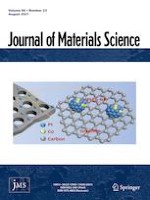11.05.2021 | Materials for life sciences
Boost antimicrobial effect of CTAB-capped NixCu1−xO (0.0 ≤ x ≤ 0.05) nanoparticles by reformed optical and dielectric characters
Erschienen in: Journal of Materials Science | Ausgabe 23/2021
EinloggenAktivieren Sie unsere intelligente Suche, um passende Fachinhalte oder Patente zu finden.
Wählen Sie Textabschnitte aus um mit Künstlicher Intelligenz passenden Patente zu finden. powered by
Markieren Sie Textabschnitte, um KI-gestützt weitere passende Inhalte zu finden. powered by
